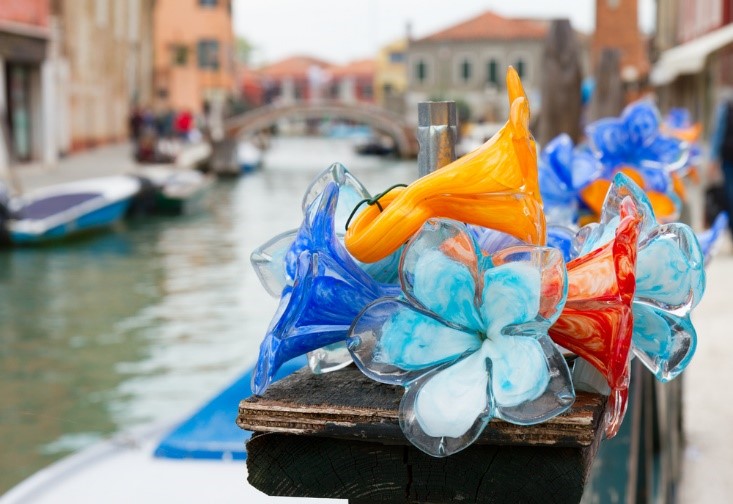Murano Glass
Category: Technique | Date: 03/15/2019
Born of a thousand-year-old glassblowing tradition Murano glass is renowned for its quality and artistry.
Murano Glass at a Glance
Venetian glass is a celebrated art form distinguished by its colorful elaborate and skillful technique. During the 13th century Venetian glass factories were moved to the island of Murano to protect Venice’s mostly wooden buildings from the fiery glass blowing furnaces needed to produce the acclaimed glass.
Moving glass production to the island had the additional benefit of securing its characteristic technique. For nearly 800 years the secret of Murano glass making was kept under wraps and teaching any foreigner the top-secret techniques was a crime punishable by death. Around the 18th century the secret to this art glass was finally leaked and the technique spread throughout Europe America and Asia.
From Flowing Glass to Flowers
Today’s Murano glass is still interwoven with Venetian glass using a technique called lampworking which uses a gas-fueled torch to heat silica to a molten state and flux agent to slow the cooling process. Then specialized tools are used to shape the soft slowly cooling glass.

Murano glass includes three varieties:
At the 1984 wholesale jewelry show in Tucson Arizona he began to collect cut polish and sell opal and other assorted gemstones. In the late 90's he was approached by customers asking for Canadian ammolite. At that time, he had no idea what Canadian ammolite was however being a Canadian he began his investigation.
The rolling colors displayed in the organic gemstone hooked him immediately. John began his search for wholesale purchasing of ammolite. Later in 2004 John met a wholesaler that had what he was looking for in quality. He partnered with this wholesaler and built a business which is known as the largest supplier of ammolite.
Murano glass includes three varieties:
- Enameled glass (smalto)
- Milk glass (lattimo)
- Multicolored glass (millefiori).
Millefiori which translates to a “thousand flowers” is one of the oldest and most well-known styles and features small mosaic cross sections of glass.
The process includes stretching and shaping arrangements of multicolored glass rods. The arrangement of colored rods is heated and stretched into a long thin cane. The cane can then be cut to size for use as beads or placed on a gather of molten glass.
This technique has been adopted by most of the glassmaking centers of the world including Japan and China. Shop LC sources its Murano-style glass from China.